 |
 |
 |
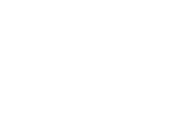
|
Installation view, folly, Phyllida Barlow, British Pavilion, Venice, 2017. Photo: Ruth Clark © British Council. Courtesy the artist and Hauser & Wirth
|
|
 |
BRITISH PAVILION AT THE 57TH INTERNATIONAL ART EXHIBITION OF LA BIENNALE DI VENEZIA
9/5/2017-26/11/2017
PHYLLIDA BARLOW: folly
The British Council is delighted to present folly, an ambitious sculptural installation by Phyllida Barlow conceived and created for the British Pavilion at the 57th International Art Exhibition of la Biennale di Venezia.
Commenting on the exhibition, Emma Dexter, Commissioner of the British Pavilion and Director Visual Arts at the British Council, said:
“Phyllida Barlow has chosen to make a body of work that boldly responds to Venice, to the context of the Biennale and in particular to the Pavilion itself. She has succeeded in weaving these together with her own sculptural obsessions and concerns that have fascinated her throughout her career, and which I know will beguile and inspire audiences in Venice and around the world.”
|

|
Posted 9 May 2017
|
Share this:
|
|
Barlow’s extensive series of new works expands across the entire site of the British Pavilion. Works are placed outside the building, spaces inside are bisected and disrupted, while other works reach up high into the roof and can only be glimpsed from below.
|
|
|
|
|
|
|
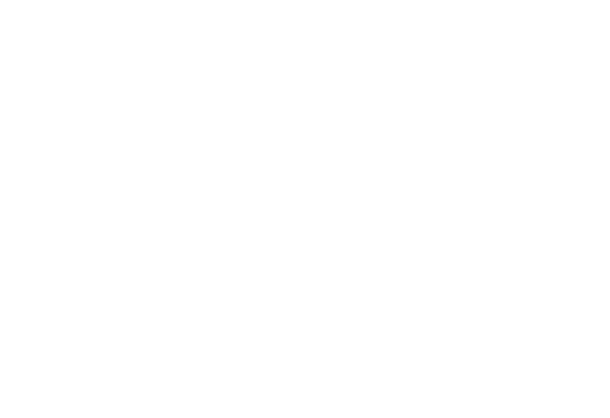
Installation view, folly, Phyllida Barlow, British Pavilion, Venice, 2017. Photo: Ruth Clark © British Council. Courtesy the artist and Hauser & Wirth
|
|
|
|
|

|

|

|
In English the word folly has several meanings. It can refer to a solely decorative architectural feature whilst also conveying a jovial foolishness, and both of these references are simultaneously present in this installation. The title of the exhibition suggests the themes that the artist explores, both here and in her wider sculptural practice: for example, the nature of a façade, the dualities of front and back, questions relating to the decorative, the deceitful, the theatrical, and the interplay of real and fake. Barlow herself has commented:
“Making art is a political act. I have always believed that. It wrestles with beauty, fear, emotion. It doesn’t have a verbal language attached so it becomes a game. It’s feral in its existence. And we have to fathom it.”
Throughout her career, Barlow has used cheap, readily available materials such as timber, concrete and fabric to make her work and has consistently reused and recycled these into new pieces. She has explored the limits and possibilities of these materials, creating colossal sculptures sometimes without the use of armatures or other more traditional methods of construction.
The first impression of the Pavilion entrance, populated with brightly coloured baubles jostling around the neoclassical portico and steps, appears joyful and celebratory. But these monstrous bulging forms also have a sinister quality as they press towards the viewer, taking over and dominating the space.
|
|
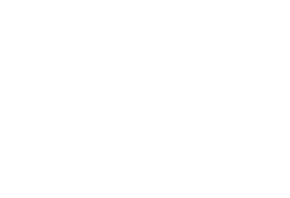
Installation view, folly, Phyllida Barlow, British Pavilion, Venice, 2017. Photo: Ruth Clark © British Council. Courtesy the artist and Hauser & Wirth
|
|
|
|

|

|

|
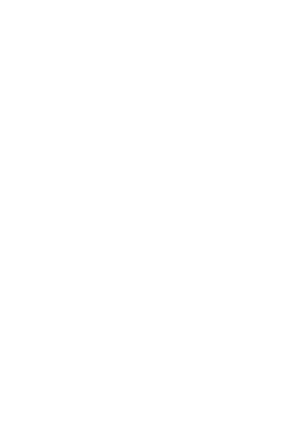
Installation view, folly, Phyllida Barlow, British Pavilion, Venice, 2017. Photo: Ruth Clark © British Council. Courtesy the artist and Hauser & Wirth
|
|
Inside the Pavilion, the viewer is confronted by an awe-inspiring sculptural ensemble of columns that ascend dramatically up to the ceiling. These densely-packed forms encourage the visitor to take on the role of an explorer, picking their way around and through a sculptural labyrinth. Barlow’s use of scale is tempered by the seeming impermanence and fragility of these constructions. As Barlow explains, she has driven herself to work at such scale as “a means to explore the potential of making to go beyond my immediate control, to tempt a condition of being out of control … reaching beyond what is physically possible in terms of my height, stretch.”
Throughout the Pavilion, Barlow uses colour to contrasting effect. Her choice of dark grey is reminiscent of the modern built environment, which is offset by contrasting bright pinks, reds and oranges. These brilliant colours confront the visitor dramatically throughout the exhibition in the form of teetering, sloping walls that both dominate and split the gallery spaces. The muted tones of rack offer a change of emphasis; this work, consisting of carefully ordered painted canvas sheets, which allude to the artist’s studio and the process of making art, suggests a repository of future and potential works.
Within the exhibition, Barlow has created many works that resemble familiar objects – piano/anvil, 3 carousel chairs, balcony and axle for example. A gnarled anvil sits on top of a stack of dismembered pianos, while a huge axle adds a reference to heavy industry. Barlow enjoys juxtaposing these elements with more abstract sculptural forms, in order to tease out the paradoxical nature of sculpture and its relationship to objects in the real world.
|
|
|
|
|

|

|

|
At the rear of the Pavilion, Barlow has positioned a balcony as an address to the city of Venice itself, looking out over the lagoon and encrusted as if reclaimed from the seabed. In the same room, chairs resembling those on a fairground ride continue the festive theme yet their folded forms imply decay and desolation, rather than joy.
Outside the Pavilion, the cast concrete holed hoarding evokes a screen or billboard. At its feet sits a tangle of barely recognisable objects such as shoes, tyres, placards; perhaps abandoned debris left over from a party, or a demonstration.
With folly, Barlow stages a series of dramatic encounters that playfully challenge the visitor to explore their own understanding and experience of sculpture. Her bold installation feels monumentally vast but the sculptures always remain grounded by a distinctly human presence evident in their creation.
An illustrated book has been produced in partnership with Black Dog Publishing to coincide with the opening of folly, including texts by Phyllida Barlow and Emma Dexter.
|
|
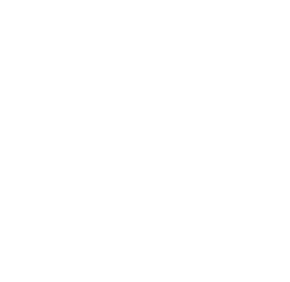
Installation view, folly, Phyllida Barlow, British Pavilion, Venice, 2017. Photo: Ruth Clark © British Council. Courtesy the artist and Hauser & Wirth
|
|
|
|
|
|
About the artist
Phyllida Barlow (b. 1944, Newcastle upon Tyne, England) studied at Chelsea College of Art (1960 – 1963) and the Slade School of Art (1963 – 1966). After joining the staff in 1986, Barlow taught at the Slade School of Art for more than twenty years before retiring in 2009 and is now Emerita Professor of Fine Art. In 2011 Barlow became a Royal Academician and in 2015 she was made a CBE for her Services to the Arts in the Queen’s New Year’s Honours.
Barlow’s recent solo exhibitions include demo at Kunsthalle Zürich (2016); tryst at Nasher Sculpture Center, Dallas TX (2015); set at The Fruitmarket Gallery, Edinburgh (2015); mix at Lokremise, St. Gallen, Switzerland (2015); dock the Duveen Commission at Tate Britain, London (2014); HOARD, Norton Museum of Art, West Palm Beach FL (2013); scree, Des Moines Art Center, Des Moines IA (2013); siege, New Museum, New York NY (2012) and BRINK, Ludwig Forum, Aachen, Germany (2012). Phyllida Barlow is represented by Hauser & Wirth.
Audio description of the exhibition is available at the British Pavilion. Visit our website for more details on access: venicebiennale.britishcouncil.org/visit
About the British Council in Venice
The British Council has commissioned artists to represent Britain at the Venice Biennale since 1937. Artists representing Britain have included Henry Moore, Barbara Hepworth, Francis Bacon, Lucian Freud, Ben Nicholson, Anthony Caro, Bridget Riley, Richard Long, Frank Auerbach, Howard Hodgkin, Barry Flanagan, Anish Kapoor, Richard Hamilton, Rachel Whiteread, Leon Kossoff, Gary Hume, Mark Wallinger, Gilbert & George, Tracey Emin, Steve McQueen, Mike Nelson, Jeremy Deller and most recently Sarah Lucas in 2015.
Phyllida Barlow: folly was commissioned by the British Council for the 57th International
Art Exhibition of La Biennale di Venezia, 2017.
With support from: Hauser & Wirth, Henry Moore Foundation and Art Fund
With thanks to our Pavilion Patrons
Selection Committee for 2017
The British Council works with a committee of leading arts professionals across the UK which advises on the artist selection for the Venice Biennale every two years. This is to ensure that the selection process is transparent and broadly based.
– Maria Balshaw, Director, Whitworth Art Gallery, Manchester (Director designate, Tate)
– Alfredo Cramerotti, Director, MOSTYN, Llandudno, Wales
– Jennifer Higgie, Editor, Frieze Magazine
– Skinder Hundal, Chief Executive, New Art Exchange, Nottingham
– Sarah McCrory, Director, Glasgow International, Glasgow, Scotland (Director designate, Goldsmiths Gallery, London)
– Helen Legg, Director, Spike Island, Bristol
– Matt Packer, Director, Centre for Contemporary Art, Derry, Northern Ireland (Director designate, EVA International Biennial, Ireland)
– Alastair Sooke, art critic and columnist, The Daily Telegraph and BBC
The British Pavilion is managed by
British Council Visual Arts:
Commissioner: Emma Dexter
Deputy Commissioner: Gemma Hollington
Exhibition Curator: Delphine Allier
Exhibition Curator: Harriet Cooper
Venice Fellowships
The Venice Fellowships programme is being introduced for the first time at the Art Biennale in 2017. Working in partnership with 18 universities and arts organisations across the UK, the British Council is offering up to 60 students and volunteers the opportunity to spend a month in Venice conducting independent research and invigilating the exhibition.
UK in Venice
The British Council is partnering with Scotland + Venice and Cymru yn Fenis Wales in Venice and the collaboration includes the creation of short films featuring the selected artists. The British Council has also produced an online and printed UK in Venice map to support the UK’s participation in and contribution to the Biennale Arte and its satellite programmes.
About the British Council
The British Council is the UK’s international organisation for cultural relations and educational opportunities. We create friendly knowledge and understanding between the people of the UK and other countries. Using the UK’s cultural resources we make a positive contribution to the countries we work with – changing lives by creating opportunities, building connections and engendering trust. We work with over 100 countries across the world in the fields of arts and culture, English language, education and civil society. Each year we reach over 20 million people face-to-face and more than 500 million people online, via broadcasts and publications. Founded in 1934, we are a UK charity governed by Royal Charter and a UK public body. The majority of our income is raised delivering a range of projects and contracts in English teaching and examinations, education and development contracts and from partnerships with public and private organisations. Eighteen per cent of our funding is received from the UK government.
Henry Moore Foundation
The Henry Moore Foundation is a leading UK arts charity, founded by the artist in 1977 to encourage public appreciation of the visual arts. Its main responsibilities are preserving Moore’s legacy at Henry Moore Studios and Gardens in Hertfordshire and through exhibitions of his work worldwide; sculpture exhibitions and research at the Henry Moore Institute in Leeds; and awarding grants to arts organisations in the UK and abroad.

|

|

|

|

|
|
|
Installation view, folly, Phyllida Barlow, British Pavilion, Venice, 2017. Photo: Ruth Clark © British Council. Courtesy the artist and Hauser & Wirth
|
|
|
|
|
Installation view, folly, Phyllida Barlow, British Pavilion, Venice, 2017. Photo: Ruth Clark © British Council. Courtesy the artist and Hauser & Wirth
|
|
|
|
|
Installation view, folly, Phyllida Barlow, British Pavilion, Venice, 2017. Photo: Ruth Clark © British Council. Courtesy the artist and Hauser & Wirth
|
|
|
|
|
|
|
|
|


